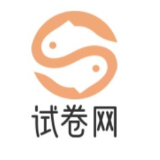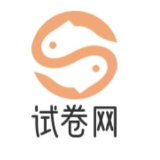中国大学MOOC大学英语Ⅲ-2024秋作业答案
想要快速找到正确答案?
立即关注 超新尔雅学习通微信公众号,轻松解决学习难题!

作业辅导
扫码关注
论文指导
轻松解决学习难题!
中国大学MOOC大学英语Ⅲ-2024秋作业答案
大学英语Ⅲ-2024秋
学校: 九八五题库
学校: 超星学习通
题目如下:
1. 1. 1 (人工智能) refers to the intelligence exhibited by machines or software.It mimic(模仿) the 2 (解决问题的)and 3 (做决定的)capabilities of the human mind. AI includes narrow AI, such as 4 (自动驾驶汽车), 5 (人脸识别), etc. and artificial general intelligence that may be much smarter than the smartest human on earth. self-driving car can benefit 6 (老年人), 7 (残疾人), mothers with young children. But sometimes AI may be dangerous. When we shop, either online or offline, we use credit cards, Alipay or bonus cards. But in this 8 (数字时代), our behavior is often recorded without us realizing it, including our shopping history, buying habits, and 9 (偏好).So 10 (隐私保护)is very necessary.Scientists working alongside AI systems that can home in on areas of research are very likely to be fruitful.
答案:
2. 1. 请填写字母代号。
答案: H# K# F# M# N# G# B# J# A# 第十空: E
3. 1. Directions: In this section, you are going to read a passage with ten statements attached to it. Each statement contains information given in one of the paragraphs. Identify the paragraph from which the information is derived. You may choose a paragraph more than once. Each paragraph is marked with a letter. Answer the questions by marking the corresponding letter on Answer Sheet 2. Medicine and Public Health in Ancient Rome A) The Ancient Romans, like the Ancient Greeks and Ancient Egyptians, made a huge input into medicine and health, though their input was mainly concerned with public health schemes. Though the Roman 'discoveries' may not have been in the field of pure medicine, poor hygiene by people was a constant source of disease, so any improvement in public health was to have a major impact on society. B) The Romans learned a great deal from the Ancient Greeks. They first came into contact with the Greeks in about 500 BC. By 146 BC, part of Greece had become a province of the Roman Empire and by 27 BC, the Romans were in control not only of Greece but of Greek-speaking lands around the Mediterranean (地中海). They used the ideas of the Greeks but they did not simply copy them. They ignored the Greek ideas they found impractical and it seems that the Romans were keener on things that would lead to the direct improvement of the quality of life of the people in their huge empire. The Romans were more practical especially as the Romans do seem to have been more interested in mathematics and solving practical problems. C) In the early years of the Roman Empire, there were no people in what would be a separate medical profession. It was believed that each head of the household knew enough about herbal cures and medicine to treat illnesses in his household. As the Roman Empire expanded into Greece, many Greek doctors came to Italy and Rome. Some of these were prisoners of war and could be bought by wealthy Romans to work in a household. Many of these doctors became valuable additions to a household. It is known that a number of these men bought their freedom and set up their own practices in Rome itself. After 200 BC, more Greek doctors came to Rome but their success at the expense of Romans did generate some mistrust. D) However, many Greek physicians had the support of the emperors and the best-known doctors were highly popular with the Roman public. Pliny, a Roman writer, wrote that when Thessalus, a Greek doctor, walked around in public, he attracted greater crowds than any of the famous actors and chariot riders based in Rome. E) The Romans were great believers in a healthy mind equaling a healthy body. There was a belief that if you kepi fit, you would be more able to combat an illness. Rather than spend money on a doctor, Romans spent money on keeping fit. F) The Romans did believe that illnesses had a natural cause and that bad health could be caused by bad water and sewage. Hence their desire to improve the public health system in the Roman Empire so that everyone in their empire benefited --- not just the rich. Those who worked for the Romans needed good health as did their soldiers. In this sense, the Romans were the first civilization to introduce a programme of public health for everyone regardless of wealth. G) Roman cities, villas and forts were built in what were considered healthy places. The Romans knew not only where to build but also where not to build. The Romans became practised at draining marshes to rid areas of malaria-carrying mosquitoes. Julius Caesar drained the Codetan Swamp and planted a forest in its place. The Romans paid special attention to the health of their soldiers as without these soldiers, the Roman Empire could collapse. Great emphasis was placed on soldiers having access to clean water and being able to keep fit. Commanders ordered their junior officers not to set up a camp too near a swamp and the drinking of swamp water was especially discouraged. Soldiers were moved around as it was believed that if they stayed too long in one place, they would start to suffer from the illnesses that might have existed in that area. H) Clean water was very important to the Roman. The Cities, towns and forts were built near springs. However, as Roman cities and towns grew, they needed to bring in water from further afield. As the population grew, so did the need for clean water. Trying to shift large volumes of water underground in pipes was not possible as lead pipes would be too weak and bronze pipes would be too expensive. The Romans could not make cast iron pipes as the techniques for doing this were not known to them. I) If water could not be brought via pipes, the Romans decided to bring it overland in what were conduits (渠道). When the water got to the city, it was fed off into smaller bronze or ceramic pipes. To get the water to flow at an even (and slow) pace, conduits were built on a slight slope. Valleys were crossed by using aqueducts (渡槽). One of the most famous of these is the Pont du Gard aqueduct at Nimes in southern France. Where possible, the Romans did take water through tunnels but the hills needed to be relatively small for this to be successful. Rome, as the capital of the empire, had to have an impressive water supply. The supply was designed by Julius Frontinus who was appointed Water Commissioner for Rome in 97 AD. The aqueducts that fed Rome carried an estimated 1000 million litres of water a day. J) Personal hygiene was also a major issue in the day-to-day life of the Romans. Their famous baths played an important part in this. The baths were used by both rich and poor. Most Roman settlements contained a public bath of some sort. In Britain, the most famous are at Bath (then called Aquae Sulis by the Romans). The entrance fee for the baths were extremely small --- usually about a quadrans (1/l6th of a penny!). This extremely low price was to ensure that no-one did not bathe because it was too expensive. From the writings of Seneca, we know that the Romans spent large sums of money building their baths. Seneca wrote about baths with walls covered in huge mirrors and marble with water coming out of silver taps! “And I’m talking only about the common people.” The baths of the rich included waterfalls according to Seneca. Even people who were sick were encouraged to bathe as it was felt that this would help them to regain their good health. K) Roman houses and streets also had toilets. Other civilizations had also used toilets but they had been the preserve of the rich and were essentially a sign of your wealth. By 315 AD, it is said that Rome as a city had 144 public toilets which were flushed clean by running water. All forts had toilets in them. To complement these toilets, the Romans also needed a sufficiently effective drainage system. Pliny wrote that many Romans believed that Rome's sewers were the city's greatest achievement. Seven river were made to flow through the city's sewers and served to flush any sewage out of them.
答案: I# C# K# H# J# G# B# E# F# D
4. 1. Directions: In this section, there is a passage with ten blanks. You are required to select one word for each blank from a list of choices given in a word bank following the passage. Read the passage through carefully before making your choices. Each choice in the bank is identified by a letter. Please mark the corresponding letter for each item on Answer Sheet 2 with a single line through the center. You may not use any of the words in the bank more than once. (注意:答案只需填单词所对对应的大写字母) People around the United States and in dozens of other countries took part last week in an earthquakes drill called the Great Shake Out, an event that teaches them what to do when a real earthquake strikes. Drop, cover, and ____1_____ on. Those are the____2_____for an earthquake. In Southern California, the ____3_____ quake had its epicenter(震中)at Biola University. The drill’s____4_____ is education, said Los Angeles County Fire Captain Tom Richards. “We’re training today to ____5_____ for a major earthquake, and our goal is to stress to the citizens of the county of Los Angeles, and everywhere for that matter, to prepare, ”Richards said. Nursing students helped first-responders manage the ____6_____ . It was a ____7_____ scenario for students who entered an earthquake simulator, a truck with hydraulic (液压的) lifts that create violent shaking. Student Jenna Golden said it was scarier than she expected. “It was really ____8_____ I didn't think it was going to be that scary or that violent at all, or last for that long.” Golden said. Desiree Sanchez, 17, got a close-up look at a frightening scenario that she more often sees on ____9_____.“We always hear about it everywhere else, but we never hear about it here,” Sanchez said. What causes earthquake? Geologist Dale Schneeberger of Biola University ____10_____ that earthquakes are caused by a region’s setting on the boundary of two plates of the earth’s crust, which press against each other.
答案: D# N# B# K# O# A# L# H# C# 第十空: E
版权所有:学通智库|学起Plus/超星/安徽继教/云上河开全平台题库中心
文章标题:中国大学MOOC大学英语Ⅲ-2024秋作业答案
文章链接:https://www.211tiku.cn/cxey/2231.html
本站文章来自网上,侵权联系站长,立即删除。
文章标题:中国大学MOOC大学英语Ⅲ-2024秋作业答案
文章链接:https://www.211tiku.cn/cxey/2231.html
本站文章来自网上,侵权联系站长,立即删除。
文章作者:学通智库
文章标题:中国大学MOOC大学英语Ⅲ-2024秋作业答案
文章链接:https://www.211tiku.cn/cxey/2231.html
本站所有文章除特别声明外,均采用 CC BY-NC-SA 4.0 许可协议,转载请注明来自学通智库 !
文章标题:中国大学MOOC大学英语Ⅲ-2024秋作业答案
文章链接:https://www.211tiku.cn/cxey/2231.html
本站所有文章除特别声明外,均采用 CC BY-NC-SA 4.0 许可协议,转载请注明来自学通智库 !
文章说明
本文标签:
©版权声明
本站提供的文章均来自网上,如有侵权请邮件与我们联系处理。敬请谅解!
相关文章
- 1中国大学MOOC2024-2025学年第二学期 习近平新时代中国特色社会主义思想概论作业答案 (4)
- 2中国大学MOOC2024-2025学年第二学期 习近平新时代中国特色社会主义思想概论作业答案 (4)
- 3中国大学MOOC中国古典小说鉴赏作业答案 (4)
- 4中国大学MOOC中国古典小说鉴赏作业答案 (4)
- 5中国大学MOOC高铁全产业链--创新创业教育作业答案
- 6中国大学MOOC高铁全产业链--创新创业教育作业答案
- 7中国大学MOOC2025Spark大数据技术作业答案
- 8中国大学MOOC2025Spark大数据技术作业答案
- 9中国大学MOOC军事理论(2025春)作业答案 (3)
- 10中国大学MOOC军事理论(2025春)作业答案 (3)
- 11中国大学MOOC医学遗传学作业答案
- 12中国大学MOOC医学遗传学作业答案
- 13中国大学MOOCHTML5与CSS3网页设计作业答案 (3)
- 14中国大学MOOCHTML5与CSS3网页设计作业答案 (3)
- 15中国大学MOOC习近平总书记关于教育的重要论述研究作业答案
- 16中国大学MOOC习近平总书记关于教育的重要论述研究作业答案
评论留言
取消回复


